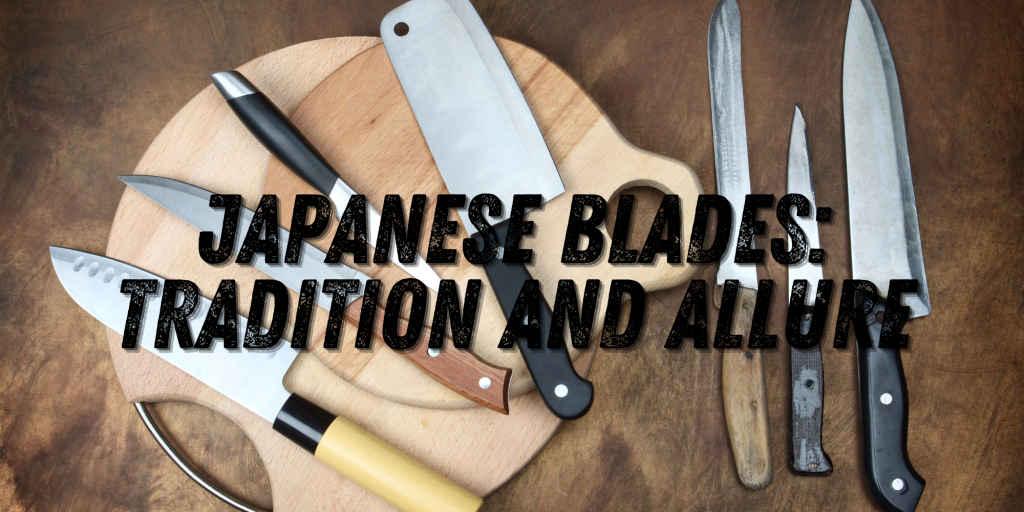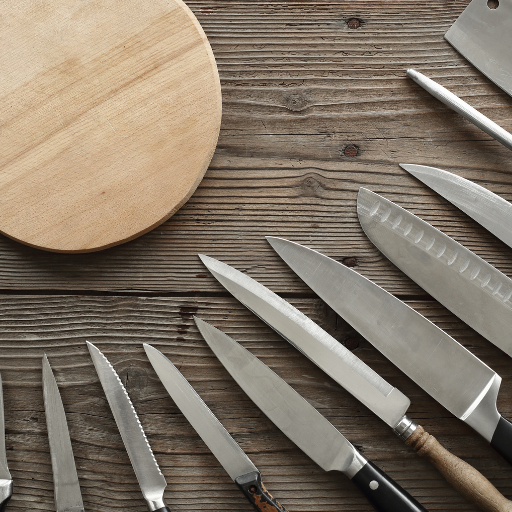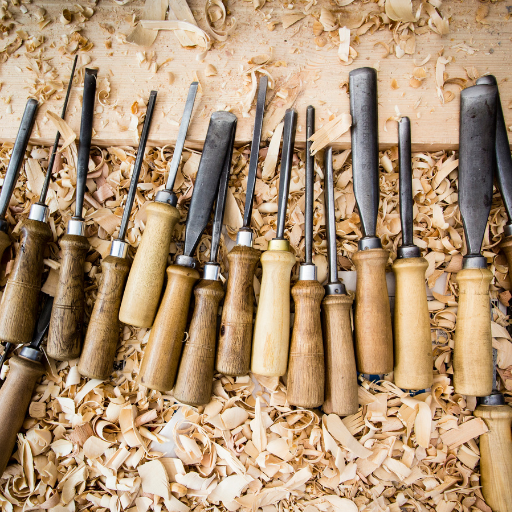
The History of Japanese Blades
Japanese blades boast a long history and advanced techniques dating back to ancient times. As the manufacturing techniques of Japanese swords evolved, various blades for different purposes also developed. Japanese blades are highly regarded worldwide for their sharpness and beautiful design.
Japanese Knives

Japanese knives come in various types, each suited for different purposes. Below are some of the most representative types:
- Santoku Knife: A versatile knife used for cutting meat, fish, and vegetables. It is the most commonly used knife in Japanese households.
- Deba Knife: A thick, heavy knife used for filleting fish and cutting through bones.
- Sashimi Knife (Yanagiba): A long-bladed knife used for slicing sashimi beautifully, known for its extremely sharp edge.
- Usuba Knife: A thin-bladed knife used for cutting vegetables and suitable for delicate work.
- Gyuto Knife: A chef’s knife similar to a Western chef’s knife, used primarily for cutting meat.
- Petty Knife: A small knife used for cutting fruits and small vegetables.
Japanese Chisels
Carpentry Chisels
Japanese chisels are essential tools for precise woodworking. They are particularly valued as traditional carpentry tools, known for their sharpness and durability.
- Oire Nomi (Bench Chisel): A general-purpose woodworking chisel used for a wide range of tasks.
- Tataki Nomi (Striking Chisel): A chisel used with a hammer, suitable for hard wood.
- Hira Nomi (Flat Chisel): A chisel with a flat blade used for creating smooth surfaces.
Carving Chisels

Japanese carving chisels are ideal for intricate carving work and are used in creating artworks and crafts.
- Maru Nomi (Gouge): A chisel with a curved blade used for carving curves.
- Kogatana (Small Knife): A small chisel used for detailed carving work.
The Appeal of Japanese Blades
Sharpness
Japanese blades are known for their exceptional sharpness. The combination of high-quality steel and expert craftsmanship results in superior cutting performance.
Beautiful Design
Japanese blades are not only functional but also beautifully designed. The blade shapes, handle decorations, and scabbard designs all reflect meticulous attention to detail.
Durability
Made from high-quality materials and with precise manufacturing techniques, Japanese blades are highly durable. With proper care, they can be used for many years.
Conclusion
Japanese blades are highly regarded worldwide for their history, tradition, and superior craftsmanship. Knives and chisels are loved for their outstanding performance and beauty. Additionally, by using Forwarding Service Japan, you can easily order high-quality Japanese blades from abroad and have them delivered straight to your home. Experience the allure of Japanese blades in the comfort of your own home.